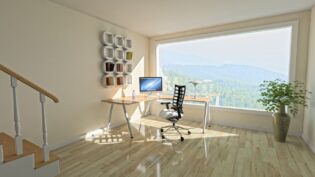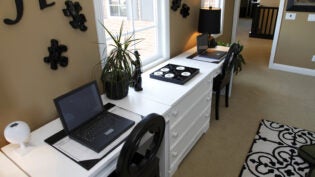
Last week we looked at some of the problems open office environments pose to productivity. Here are more thoughts on open offices and what you can do in your business.
Other Problems with Open Offices
Health
Research demonstrates that open offices contribute to stress. Although studies are limited on overall employee health and well-being, early indications point to a negative impact.
A study in Environment and Behavior found that workers in small- and medium-sized open offices had the lowest self-rated health status. The Scandinavian Journal of Work, Environment & Health reported that workers in open offices had the most days of absence due to sickness than any other type of office. Compared to private offices, open office workers took 62 percent more days off.
Related Article: Healthy Employees Are No Small Business Feat
An Ergonomics study on office design and sick leave rates discovered that open office workers were most likely to take short-term sick leave. This could be due to an increased risk for the spread of infection or exposure to environmental stressors such as distracting noise and lack of privacy.
Productivity
In open offices, disruptions are more common than in traditional offices. Consequently, productivity is impaired in a number of ways.
- Subjects made twice as many errors after a brief interruption of 2.8 seconds (Journal of Experimental Psychology).
- It took people an average of 25 minutes and 26 seconds to return to work following an interruption, when resuming work on the same day (Conference on Human Factors in Computing Systems).
- Complex tasks take “an additional 15 minutes to regain the same intense focus or ‘flow’ as before the interruption,” based on a study in the productivity book Peopleware (The Wall Street Journal).
- Workers who are interrupted make 50 percent more mistakes and take twice as long to finish their work (Laraine Flemming, Reading for Results).
- People who are externally disrupted often enter into a “chain of distraction” that involves activities such as checking email, instant messaging and browsing (Conference on Human Factors in Computing Systems).
Haapakangas found in his research that open office attempts to cope with noise “reflected risk factors to individual productivity and well-being, such as taking extra breaks, compromising the quality of work, working overtime and exerting oneself harder.” Noise alone caused open office workers to waste twice as much time as those in private offices.
Job Satisfaction
Open offices have a negative effect on employee satisfaction. Ergonomics noted a strong link between working in an open office and reduced job satisfaction. And as Jungsoo Kim and Richard de Dear wrote in the Journal of Environmental Psychology, “Our results categorically contradict the industry-accepted wisdom that open-plan layout enhances communication between colleagues and improves occupants’ overall work environmental satisfaction.”
A study in Environment and Behavior followed 21 employees who were relocated from traditional offices to open offices. Four weeks after the move, employees were not happy with their environment, stress levels, coworker relations and perceived job performance. Six months after the move, they were still unhappy and team relations broke down further.
How Business Leaders Can Respond
After studying office noise and its relationship to employee performance and well-being, Happakangas concludes that “private rooms are superior to open offices in all respects.” Kim and de Dear found that workers in enclosed offices had the least amount of frustration. However, companies and business leaders can take steps to address the challenges that open offices present.
One solution is to strongly consider how the space relates to a person’s job. “As periods of individual work and telephone conversations are still predominant in most office professions, open offices do not provide sufficient acoustic, visual and psychological privacy for typical office work,” Happakangas wrote. To make the open office model work, businesses need to have more private areas that allow workers to focus on projects with maximum privacy.
Another solution that’s gaining traction in workplaces is the ability to work from home. As reported by Harvard Business Review, a study of employees at a Chinese travel agency showed that those who worked from home were happier, less likely to quit and more productive. This study is an example of growing research indicating that working from home can be beneficial for both employers and employees.
For business leaders, work environment policies join topics such as planning, motivation and teamwork. Because employee productivity and job satisfaction is holistic, leaders are urged to pursue ways to make a positive impact.
 Author: Brian Neese has been writing about online education for more than five years, with specialties in health care, business and education. In his spare time, he enjoys sports, movies and spending time with family and friends. This post originally appeared on the Rivier University website.
Author: Brian Neese has been writing about online education for more than five years, with specialties in health care, business and education. In his spare time, he enjoys sports, movies and spending time with family and friends. This post originally appeared on the Rivier University website.
2986 Views












